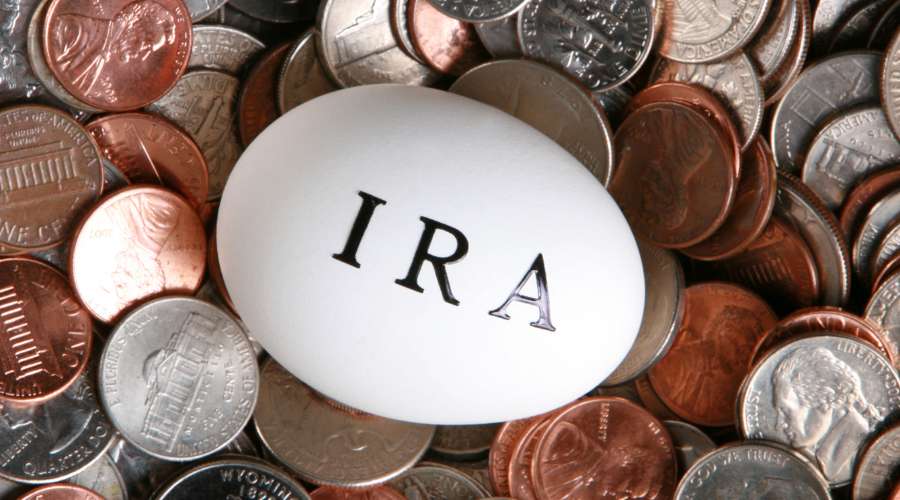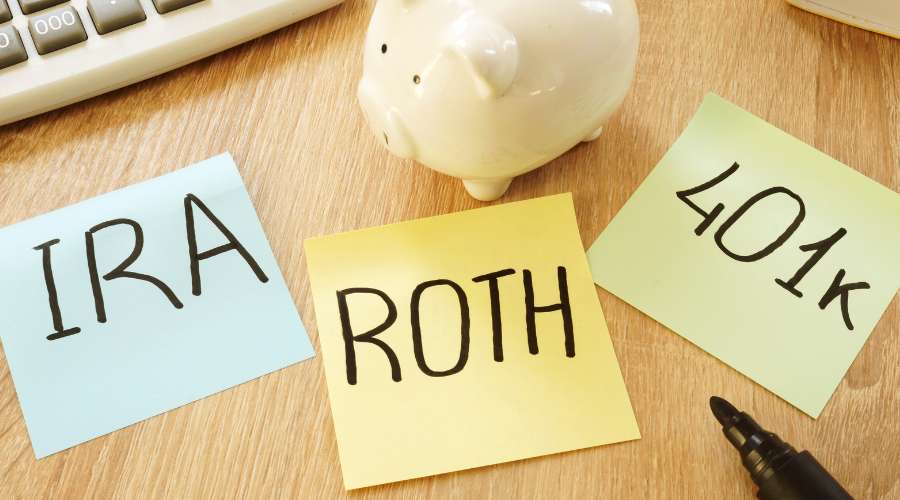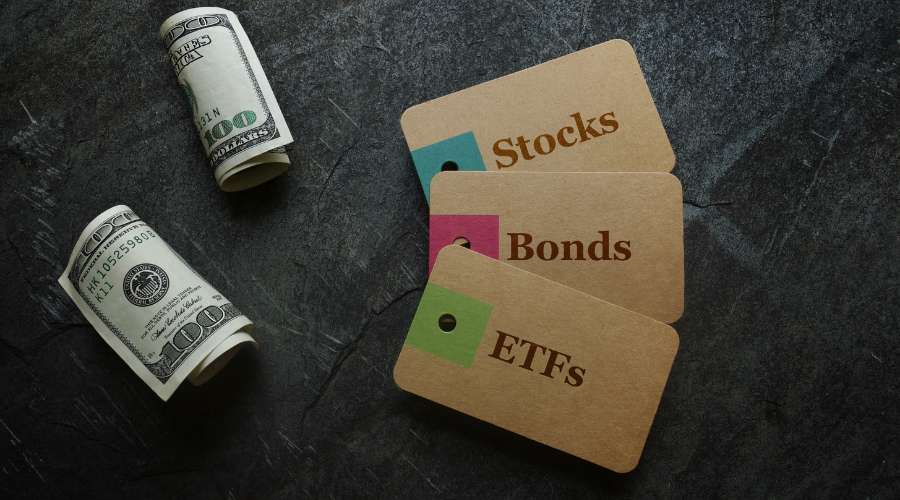Gold has long been a haven for investors looking to protect their assets and future. As global economies become increasingly unstable and the value of paper currencies fluctuates, more investors are turning to gold as a hedge against economic uncertainty. One such way to invest in gold is through a gold IRA.
But how much can you put in a Gold IRA? This article will provide an overview of the rules and regulations that govern Gold IRAs, so you can make an informed decision about how to best invest in gold.
If you are interested in investing, make sure to take a look at our highest recommended companies for this year!
>> Click Here For A List Of The 5 Highest Recommended Precious Metals Investment Companies <<
What Is a Gold IRA?

A gold IRA is an Individual Retirement Account (IRA) that allows you to invest in physical gold, silver, platinum and other precious metals. These IRAs are designed to provide financial stability during retirement by protecting your wealth from market volatility.
With a gold IRA, you can diversify your retirement portfolio with various precious metals, helping protect your financial future and providing a hedge against economic downturns.
Gold IRAs differ from conventional IRAs because the precious metals are held in an approved depository, not in your possession. This means that you can benefit from the security and convenience of having your gold securely stored while still enjoying its potential for appreciation. Plus, you can make tax-free withdrawals of up to $10,000 per year from your gold IRA without penalty.
A gold IRA also allows you to purchase gold coins and bullion at a fraction of the cost compared to buying them directly. Many investors prefer this type of IRA because it will enable them to buy gold at lower prices than they would be able to find if they purchased the coins or bars through a dealer.
There are three types of gold IRA accounts:
How Much Can You Invest in a Gold IRA?
According to the IRS, the amount you can invest in a gold IRA depends on several factors, such as income and contribution limits. Generally, the maximum contribution limit for a gold IRA is $6,500 per year for those under 50 and $7,500 for those over 50.
However, this limit may be higher if you are eligible for catch-up contributions. In addition, the annual contribution limit is subject to the total amount of contributions you make to all IRAs combined, including traditional and Roth IRAs. The overall limit for combined contributions is $6,500 for those under 50 and $7,500 for those over 50.
If you're unsure how much you can contribute to a gold IRA, your best bet is to talk to a financial advisor. They can help you understand the rules and regulations of investing in a Gold IRA and determine the right amount based on your situation.
Methods of Funding a Gold IRA

There are several ways to fund your gold IRA account; each has advantages.
Transfer
To transfer funds, you'll need to set up a transfer of funds from your current custodian, such as a 401(K) or traditional IRA, to the new gold IRA custodian. You can do this by filling out a form with your current custodian, requesting the funds be transferred to your new custodian.
Once the paperwork is completed, the custodian will transfer the funds directly to the new custodian and you'll be ready to start investing in gold and other precious metals.
Transferring funds is relatively easy, though it can take some time depending on your current custodian. Some custodians may take several weeks to process the transfer, so it's important to plan and ensure you give yourself enough time to complete the transfer before you want to start investing.
It's also important to note that there are typically fees associated with transferring funds, so you should factor this into your budget when planning for your gold IRA.
Rollover
You transfer funds from an existing retirement account into a new gold IRA account when you roll over. This means you can keep your existing retirement account intact while adding the benefits of gold. The best part about rolling over is that you won't have to pay any taxes or penalties for moving your money.
Rolling over into a gold IRA can be a straightforward process. You will need to open a new gold IRA account with a custodian of your choice. Some custodians may require a minimum balance, so check with your provider before opening an account.
Once the account has been opened, you need to contact your existing retirement plan provider and request a direct rollover of funds. They will then transfer the funds directly to your gold IRA account. You can also do an indirect rollover, where the funds are transferred to you first and then to your gold IRA account.
Cash Contributions
This method is straightforward and can be done by simply mailing a check or making a wire transfer to your IRA custodian. Include any necessary paperwork (such as an IRA Custodial Agreement) and your IRA account number when contributing.
It's also important to note that there are limits to how much you can contribute to a gold IRA account each year. Be sure to check with your custodian for more information on these limits.
Advantages of Putting Gold in an IRA
Investing in a gold IRA offers several advantages.
Diversifying Investments
Gold is a solid choice if you're looking to diversify your IRA holdings. A retirement account that includes gold is more resilient to market fluctuations. It's great for portfolio diversification because it doesn't behave like equities or bonds. It's an asset that doesn't go up and down with the market as equities and bonds do. Gold is an excellent choice if you want to reduce the overall risk of your IRA.
Inflation Hedge
Putting money into gold is an excellent hedge against inflation while saving for retirement. Gold has been a haven against inflation for ages and it is one of the few investments that can appreciate as inflation rates climb. Putting gold in an IRA is a great way to hedge against inflation, which may devastate your retirement nest egg.
Tax Advantage
Gold is a precious commodity, so it makes sense to invest in it to safeguard your retirement funds. Gold IRA investments are eligible for the same tax breaks as standard IRAs, including the ability to deduct contributions from your taxable income.
Gold investment profits might also be tax-deferred till retirement. Until the money is withdrawn from the account, no taxes will be due on the gains. This can help you save as much as possible for retirement and guarantee you enough money when needed.
Liquidity
Access to your money is a major plus of investing in gold through an IRA. Including a liquid asset in your retirement portfolio will give you more options in a financial emergency. Gold is an asset that can be easily liquidated for immediate cash or converted to alternative assets without the investor having to worry about paying significant taxes or penalties.
Prevent Losses in the Event of a Market Crash
Investing in gold is one of the best ways to protect your wealth from economic uncertainty. Adding gold to your IRA is a great way to safeguard your retirement funds from a market crash. Due to its long-standing status as a store of wealth in times of economic instability, gold's value typically increases while other markets decline. In addition, gold's reputation as a haven over the long term means it can help you safeguard your nest egg and ensure a comfortable retirement.
Are There Indirect Ways to Invest in Gold IRAs?

There are several ways to invest in a gold IRA that don't directly purchase physical gold. Using other types of indirect investments, you can still benefit from the advantages that gold offers as an asset.
Gold Futures
Gold futures are a smart way to invest in gold IRAs without buying physical gold. They are financial instrument that allows you to buy and sell gold at a predetermined price. By investing in gold futures, you can benefit from the price movements of gold without having to own it physically. You can also use gold futures to hedge against inflation and other market risks.
When investing in gold futures, it's important to remember that these investments can be pretty volatile. As such, it's important to understand the risks associated with gold futures before investing in them. There are also certain conditions and laws governing gold futures, so research before entering any agreements.
Mining Stocks
Gold mining stocks offer the opportunity to invest in a company actively involved in finding, extracting and processing gold ore. Investing in gold mining stocks provides a great way to diversify your portfolio because they are influenced by factors other than the price of gold.
When investing in gold mining stocks, it's important to understand the financial fundamentals of the company as well as its competitive position. It's also important to research the company's management team to determine how experienced they are in running a gold mining operation. It would help if you also looked into the company's history and reputation to ensure they have a track record of success.
One of the benefits of investing in gold mining stocks is that you don't have to worry about storing the physical asset. All you need to do is buy and sell the stocks as required. The downside, however, is that you are exposed to more market risk since various factors influence the stock price.
Mutual Funds
A gold mutual fund is a fund that invests in companies related to the production, exploration and marketing of gold. By investing in a gold mutual fund, you can get exposure to gold but without the need to purchase and store physical gold.
This type of indirect investing provides many advantages over directly purchasing physical gold. For one, you won't need to worry about the storage and security issues associated with physical gold. In addition, you won't need to pay for insurance or other costs associated with storing physical gold.
Gold mutual funds also provide the potential for higher returns than physical gold. Since professionals manage the fund, they can actively manage it to take advantage of market conditions and maximize returns.
Finally, Gold mutual funds offer flexibility. You can easily buy and sell shares of the fund, allowing you to adjust your investment strategy as needed. This makes them ideal for investors looking for more control over their gold investments.
Gold ETFs
One of the best ways to invest in a Gold IRA is through an Exchange Traded Fund (ETF). ETFs are traded on stock exchanges and allow investors to buy and sell units of a fund that holds physical gold in its portfolio. These ETFs are designed to track the price of gold, so you will always know what your investment is worth.
ETFs are highly liquid, meaning you can easily buy or sell whenever necessary. This makes them a great option for those looking to take advantage of short-term movements in the price of gold. ETFs tend to have lower fees than other Gold IRAs, making them a more cost-effective option.
What Is the Best Time to Withdraw from a Gold IRA?
If you have a Gold IRA, you may wonder when you can withdraw from it. The answer to this depends on the type of Gold IRA you have. It's important to understand the differences between a Traditional IRA and a Roth IRA, as they each have different withdrawal rules.
If you have a Traditional IRA, you can typically start withdrawing at 59 ½. However, you'll need to pay an early withdrawal penalty fee if you choose to do so before that age. Withdrawing money from a Traditional IRA also triggers taxes on the amount withdrawn.
On the other hand, if you have a Roth IRA, you can withdraw your contributions (but not earnings) without any penalties or taxes as long as you've had the account for at least five years. For earnings, you can start withdrawing at 59 ½ without any penalties or taxes, but you'll need to pay a 10% early withdrawal penalty if you choose to withdraw them before that age.
It's important to note that you may need to pay taxes when withdrawing from a Gold IRA. This is because the IRS considers gold a collectible asset, meaning you'll need to pay taxes on any gains you've made from selling the gold.
Finally, talking to your financial advisor or tax preparer is essential before withdrawing from your gold IRA. They can help you understand the rules and regulations that apply to your situation.
Conclusion
When investing in a gold IRA, the bottom line is that you should invest as much as you can comfortably afford. While there is no one-size-fits-all answer to how much you should invest, experts typically recommend allocating 10-15% of your total investment portfolio to gold and other precious metals. This is because gold tends to retain its value over time, making it a great way to diversify your investments and reduce risk.
The Internal Revenue Service (IRS) allows you to invest up to $6,500 (if below 50) or $7,500 (if over 50) per year in a Gold IRA. This is the maximum amount that can be invested annually and it's adjusted periodically for inflation.
At the same time, ensuring you invest with a highly reputable company that offers excellent services is crucial. Our team has carefully reviewed and selected the best gold IRA companies that can help you get started. These companies offer a variety of features, from low fees to secure storage options, so you can be sure you are making the best investment decision for your future.
Don't forget to check out our top recommended companies before investing!
